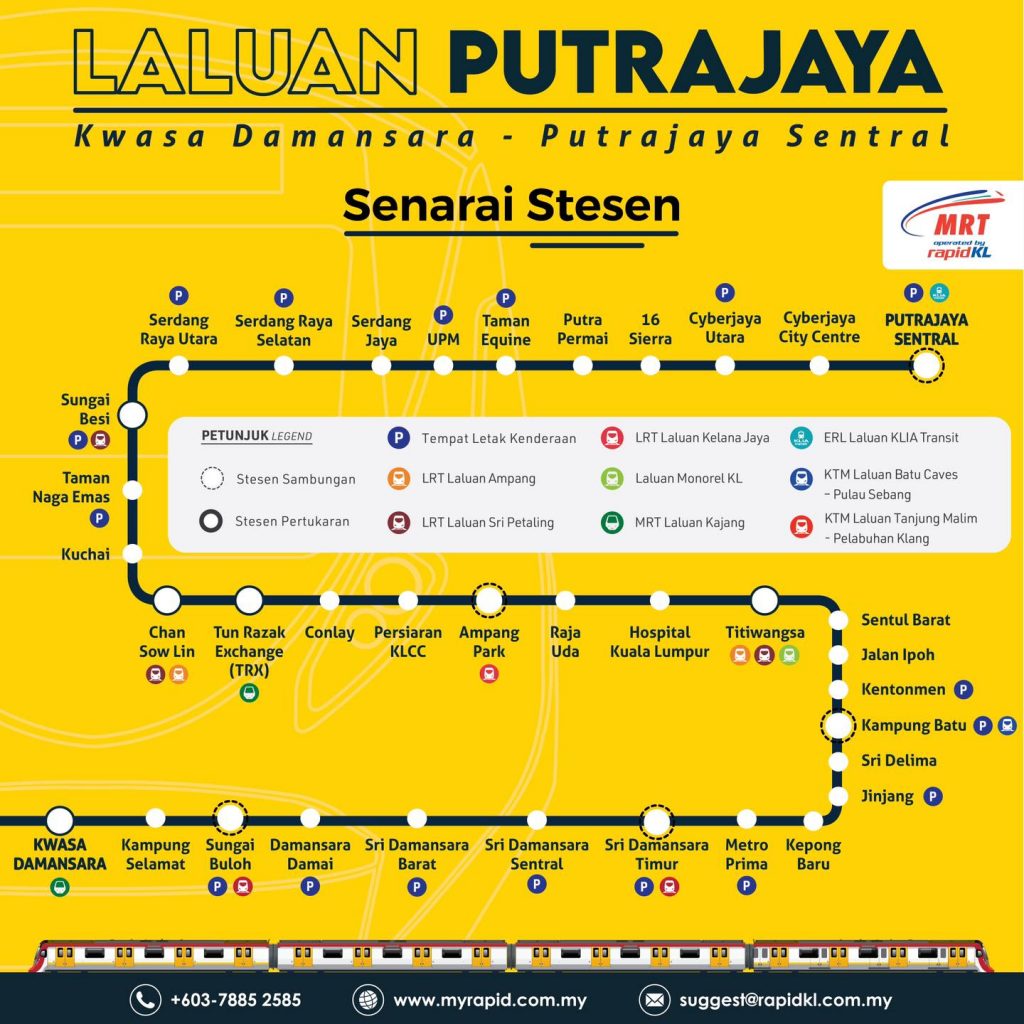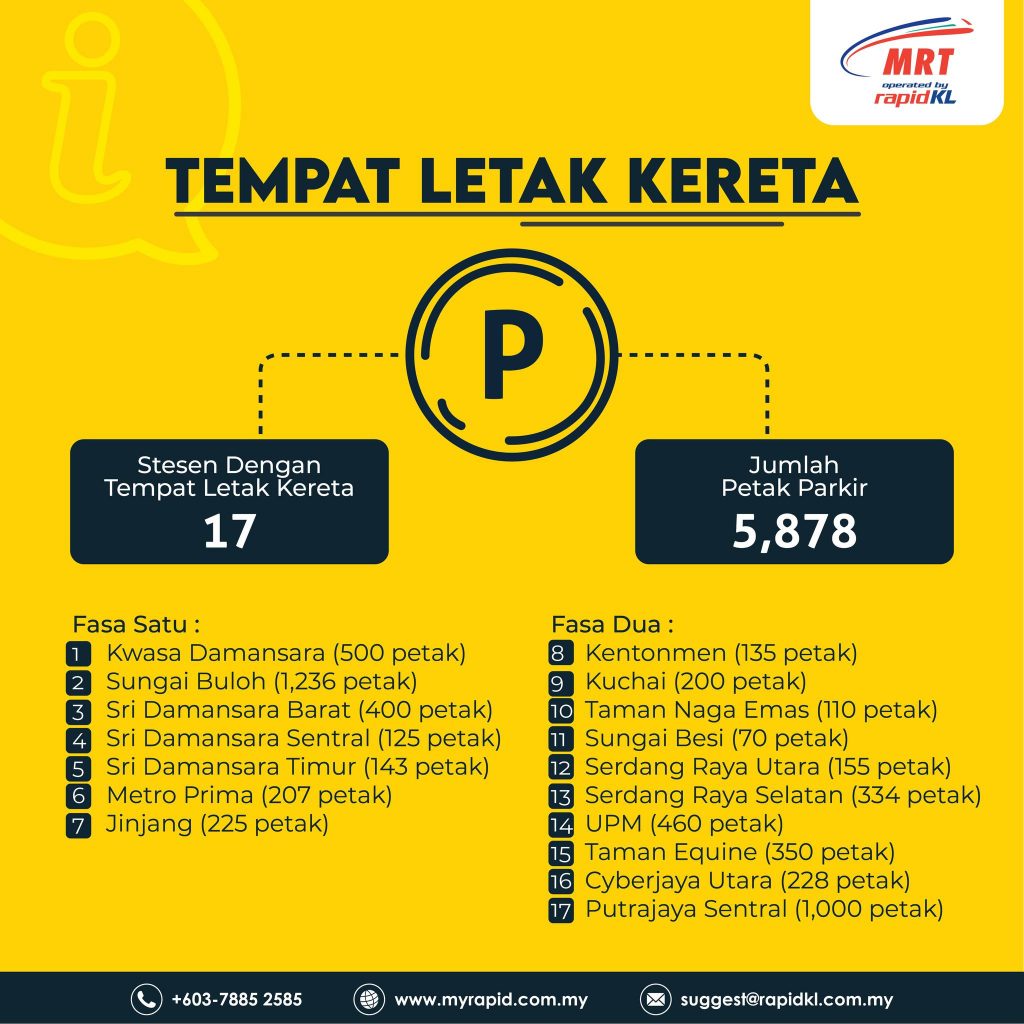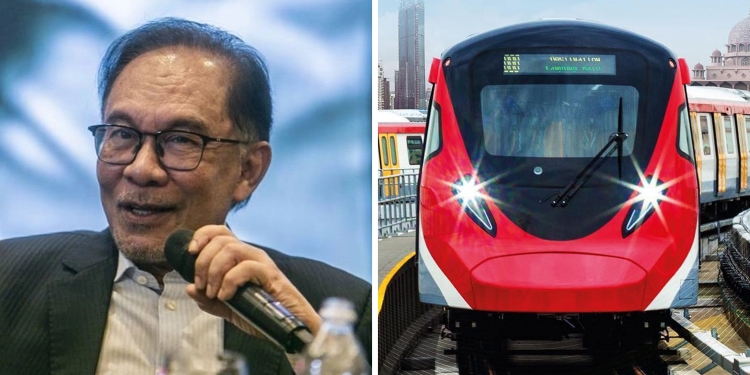[ UPDATE 16/3/2023 8:05pm ] Prasarana has now released full details of the MRT Putrajaya Line free ride scheme. You can read all about them here.
===
Nine months after the first phase of MRT Putrajaya Line was opened to the public, Prasarana has finally launched Phase 2 of the rail service, completing the 57.7km journey from Kwasa Damansara to Putrajaya Sentral. Officiating the event was Prime Minister Anwar Ibrahim, who announced that the line will be free of charge from 3pm today—when Phase 2 becomes operational—until 12:00am on 31 March.
According to Astro Awani, the premier said the incentive will involve all 36 stations on the line, not just the 24 that are being opened today. We can expect RapidKL to provide more details on the promo in due course.
Perdana Menteri, Datuk Seri Anwar Ibrahim mengumumkan tambang percuma untuk perkhidmatan Transit Aliran Massa (MRT) untuk Laluan Putrajaya.
— Astro AWANI (@501Awani) March 16, 2023
Menurutnya, tambang percuma itu melibatkan semua 36 stesen dalam laluan itu dari Stesen Kwasa Damansara ke Putrajaya Sentral.#AWANInews pic.twitter.com/MQpgNq7baN
Phase 2 makes up the bulk of the service and adds 38.7km to the line. It picks up where Phase 1 left off at Kampung Batu, starting from the Kentonmen station and stretching all the way to the administrative capital. It serves the Jalan Ipoh, Titiwangsa, Kampung Baru, KLCC (the residential areas nearby, not the twin towers themselves), Tun Razak Exchange (TRX), Pudu, Kuchai Lama, Sungai Besi, Serdang and Cyberjaya areas.
The line has interchanges with the MRT Kajang Line at the Kwasa Damansara and TRX stations, as well as the three LRT lines. These include the Ampang and Sri Petaling Line at the Titiwangsa, Chan Sow Lin and Sungai Besi stations and the Kelana Jaya Line at the Ampang Park (oddly a connecting station, meaning you’ll have to tap out at the MRT station before tapping in again at the LRT station).

There are also connections with the KTM Port Klang and Seremban Line and KLIA Transit, the latter at the Putrajaya Sentral terminus.
The Putrajaya Line will not only offer greater connectivity in the city centre, but it should also provide commuters a cheaper (well, at least once they start charging commuters) way of getting to Putrajaya, previously only served by KLIA Transit. Trains will also be more frequent, currently arriving every four minutes during peak hours and seven minutes on off-peak hours, compared to 15 minutes during peak hours for KLIA Transit.
As such, you’ll likely arrive there sooner, even if the trains themselves are much slower. Speaking of which, the rolling stock consist of Hyundai Rotem four-car train sets, with a claimed capacity of 1,200 people.

As paultan.org reported, RapidKL will provide feeder lines covering over 350km to facilitate riders getting to the stations, with fares ranging from RM1 to RM2.40; concession card holders get 50% off. There will also be parking lots at 17 stations with space for up to 5,878 vehicles in total, with a fee of RM4.30 per day for MRT commuters only. Motorcycles pay RM1.10 per entry.








